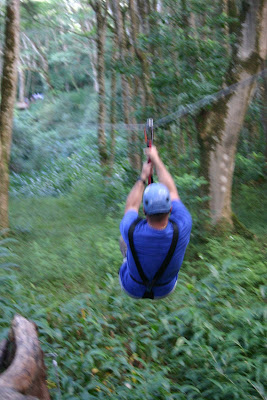Photo Copyright 2009 by Barry Fackler
This fantastic fish fits into the "common, but seldom seen" category of marine life. They can be found on any reef in Hawai'i if you are lucky enough to be looking in the right spot at the right time. This one happened to be standing out against the blue waterscape behind it. Usually, they are nestled into the reef where their camouflage renders them almost invisible.
Frogfish are sedentary ambush predators that lie in wait on the reef. A specially modified spine dangles a small "lure" directly in front of the cavernous mouth. When a small fish comes to investigate, it is sucked in by a sudden opening and closing of the jaws which takes only 6 milliseconds to complete. The lure is visible in the photo below.
Photo Copyright 2009 by Barry Fackler
Frogfish are very poor swimmers but get a little assist from a jet propulsion system that nature has provided them with. Again, they can suck in a large volume of water through the mouth, then expel it through small gill openings set about midway along the body.
Frogfish blend in well with their surroundings and, as such, can be found in a variety of colors. This particular specimen adapted to the purple-grey hue of the Leptolyngbya algae that has become very common in Honaunau over the last couple of years. In the first photo, a blob of this algae is visible on the left side of the photo between the coral and the body of the fish. We have seen red, yellow, tan, and brown frogfish at Honaunau. Juveniles are usually bright yellow and mimic a common variety of sponge.
Photo Copyright 2009 by Barry Fackler
The pectoral fins of frogfish are uniquely adapted to serve the roles of hands and feet, allowing the fish to stand upon the reef and even to grasp on to the coral. In the photo directly above you can see that these fins terminate into what appear to be stubby fingers.
Finding one of these is doubly gratifying. First, there is the satisfaction of finding the critter despite its extensive camouflage. Second is being able to appreciate the incredible adaptations that allow it to survive.





.JPG)

.jpg)














